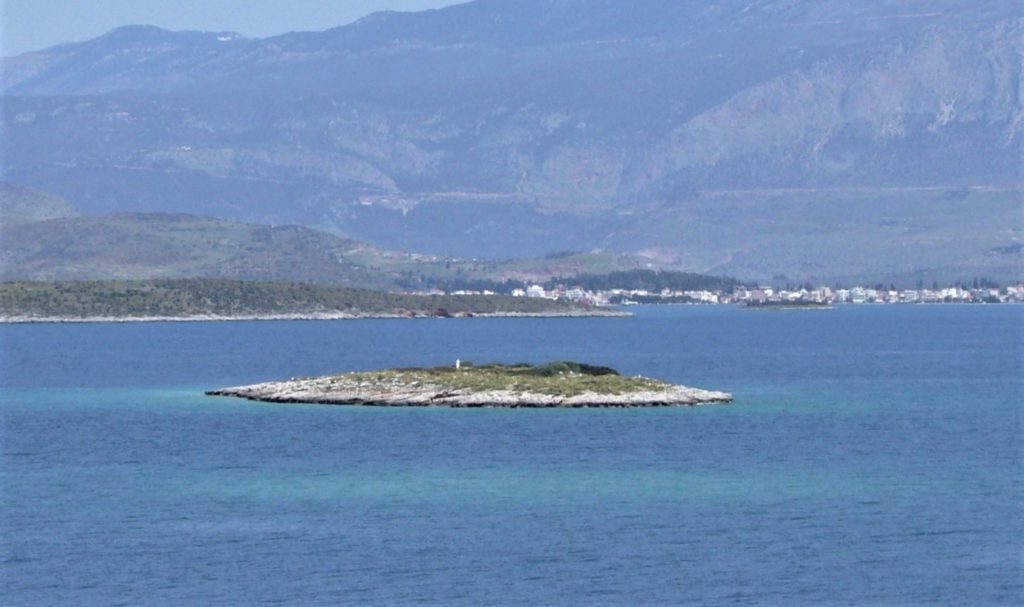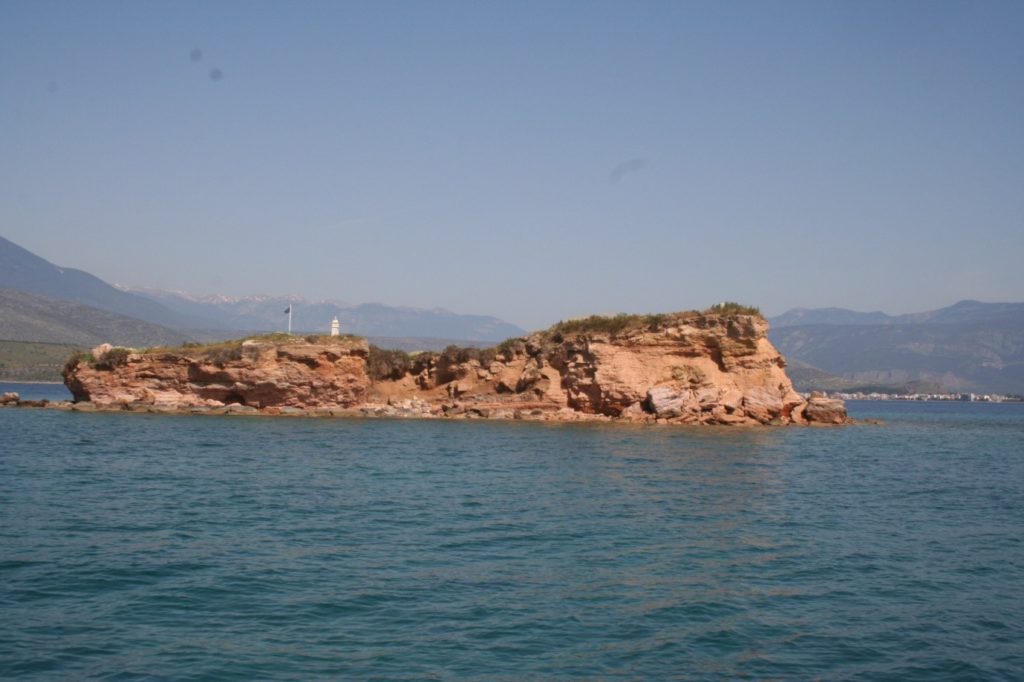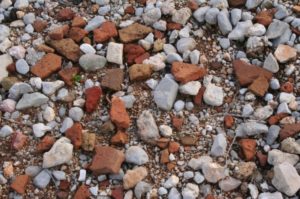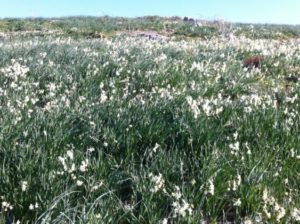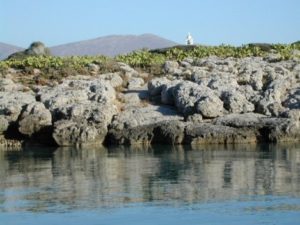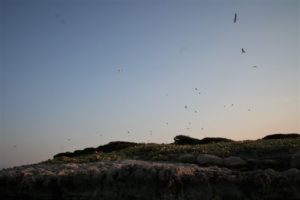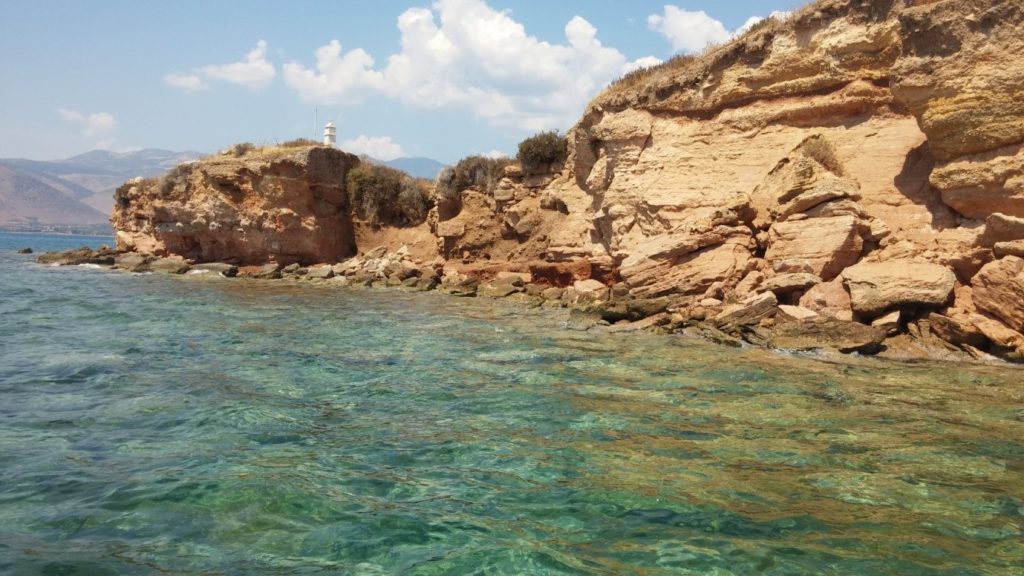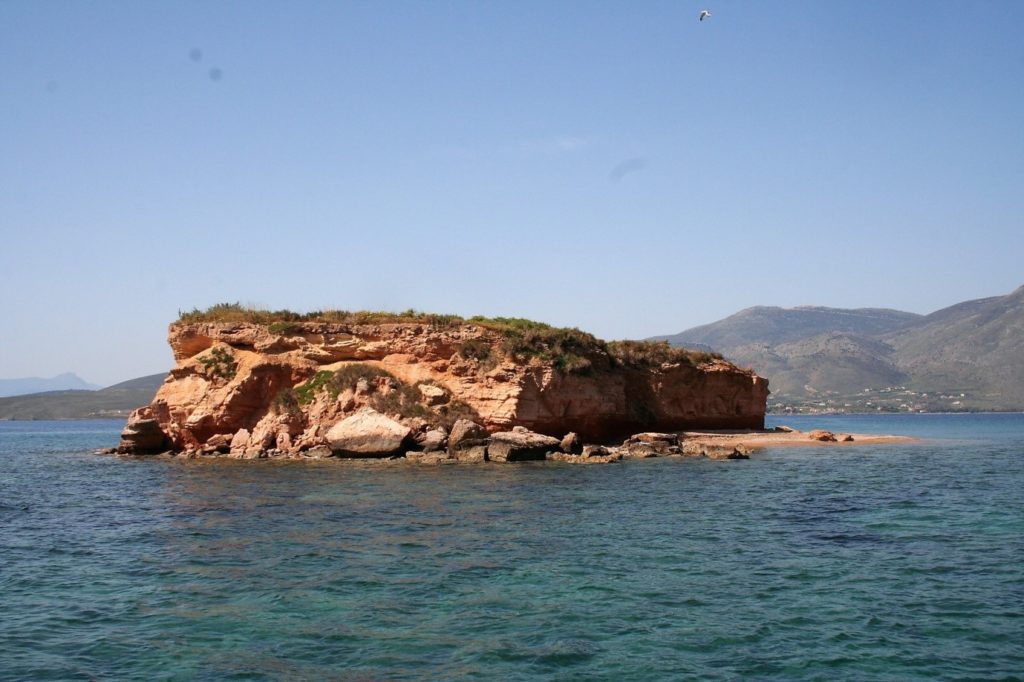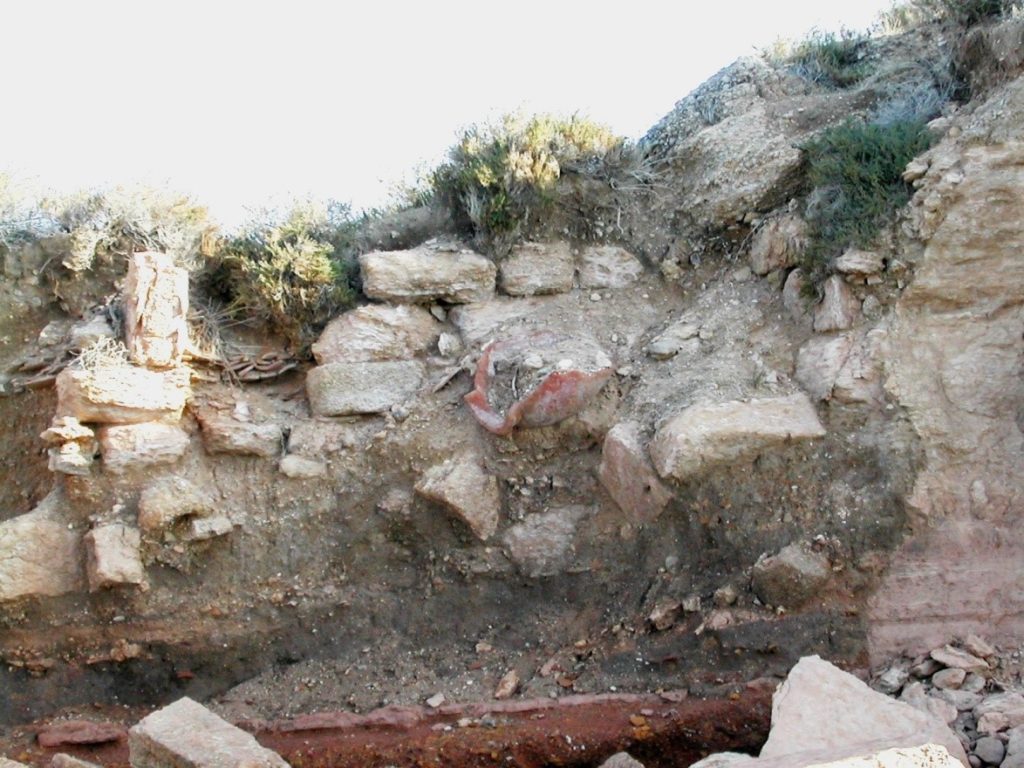The bay of Galaxidi is guarded by three islands. The largest opposite the hurbour is Agios Giorgos ( St.George) and next to it the other two, Panagia further north and Apsefia further south. Deep in the middle of the Krissaic Gulf, a special island, Agios Dimitrios.
These islets are full of ancient and recent history, today they provide anchorage for fishing boats and their narrow little sandy beaches are popular in the summer for swimming.
Saint George
Panagia
Apsefia
Agios Dimitris, north beach
Agios Dimitris, south beach
On St. George stands the homonymous church which is said to have been built on the site of an older Byzantine church, while to the south in a small cove there is a newer building, the church of Ag. Andrea. On the island live many wild rabbits hidden in burrows that eat what they find in the ground except for the bulbs of the fragrant hyacinths, known as manousakia that flood the island after the first rains. In the ground between the stones you find plenty of combed ceramic sherds from the early Byzantine era but also many ancient roof tiles that indicate the existence of buildings. The English archaeologist Sinclair Hood concluded that the islands were refuges for the inhabitants when they faced attacks from the land (Hood, S. . Isles of Refuge in the Early Byzantine Period. The Annual of the British School at Athens, 1970, 65, 37-45. R http://www.jstor.org/stable/30103208). This view is also supported by Chronicle of Galaxidi, but it has not been left without a counterpoint (for more in the articles of archaeologists: Timothy E. Gregory, Byzantine “Isles of Refuge”1981, 82 General Meeting of American Institute of Archaeology, και John Rosser :Byzantine “Isles of Refuge” in the Chronicle of Galaxeidi, Oxbow Monograph 59,1996:139-146) Hood's article thus gave rise to a lively archaeological debate around Galaxidi.
Ancient tiles and "combed" sherds in Saint George and hyacinths (Manousakia) in winter
The islet of Panagia is not easily accessible because it has a rocky shore along its entire perimeter and hosts a dense cluster of prickly pear trees with their terrible thorns on almost its entire surface. However, it is a shelter and breeding ground for seagulls that as soon as a boat approaches the islet a noisy flock takes off. On the western shore of the island there is an uphill carving along the entire length of the rock that starts from the surface of the water, about three meters wide that leads to the path that reaches the shrine at the top. This construction is considered a neolkion, i.e. an ancient launch slide. Old shreds and piles of molten metal remains are found which it is believed that indicate a copper and iron foundry installation. Traces of building foundations are also present.
The youth of Panagia and the seagulls
The islet of Apsefia is the closest islet to the land which seems to have once been connected to the opposite land as a cape and erosion turned it into an island. Definitely every year it gets smaller and smaller. It has been archaeologically investigated by Lerat and Chamoux who described surface findings that are still visible today.
On the south side erosion has destroyed a water tank and only its back wall is visible, while on the top of the same side an ancient wall with only one row of stones is visible apparently the remnants of the back of a building.
The western side of the island is steep with the earthen cliff constantly receding and revealing piles of ceramic sherds of all eras that drop into the sea.
The islet of Agios Dimitrios is constantly getting smaller as the bedrock of its eastern part is made of reddish soft rock witch is eroding and collapsing so the sea in a significant radius around it is shallow. The shape of the island is strange and from a distance it looks like a hat. This shape is due to the fact that in antiquity they had cut a wide middle strip down to the sea level which has been partly filled by silt.
On the left side (west) the vertical cut of the artificial isthmus is clearly visible
The eastern side of Ai Dimitris which is constantly collapsing due to erosion
Ancient buildings stones, jars and tiles fill the cut section of the island
In this silt, ancient rectangular building stones from local stone, ceramic jars and many roof tiles are buried which indicate that there were buildings on the island.
On the eastern, higher side, there are traces of the foundations of a small church that archaeologists consider to be of the early Byzantine era and must have been Agios Dimitrios.
On the north side facing Itea, next to a small sandy beach popular with solitary swimmers, the outline of the bottom and sides of a large ancient water collecting tank with wonderfully preserved walls can be seen.
In the following article, Professor Panos Valavanis gives a detailed description of the island and explains that the islet was a naval base in ancient times.




